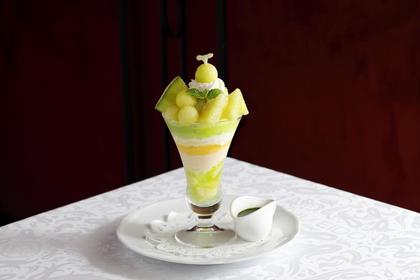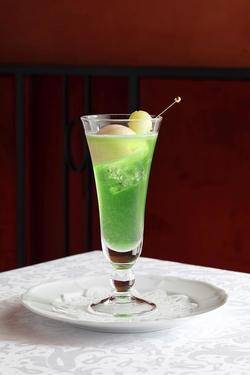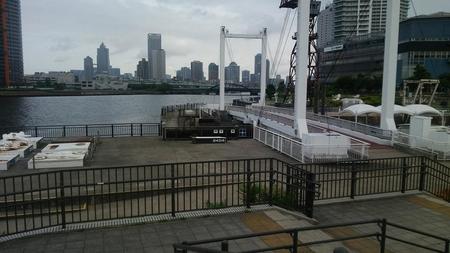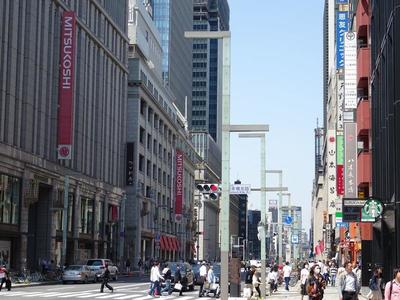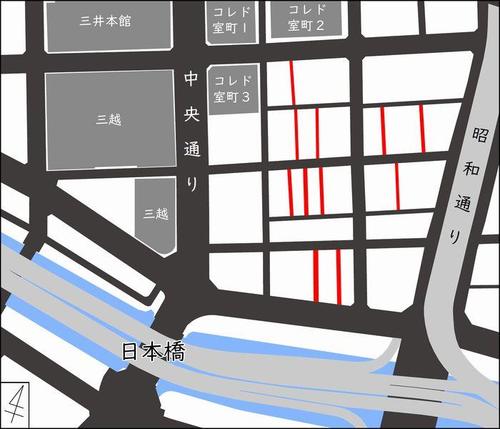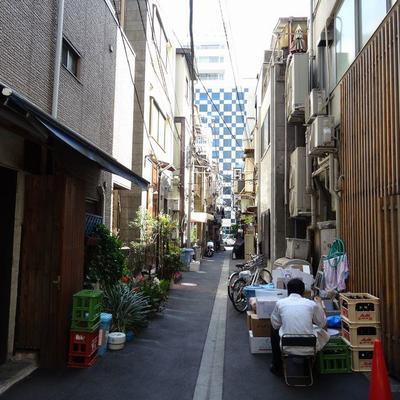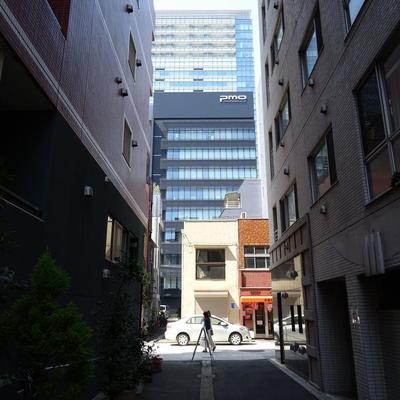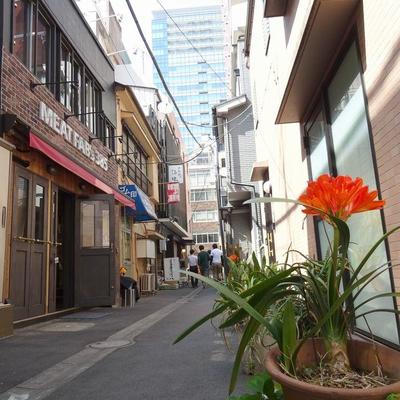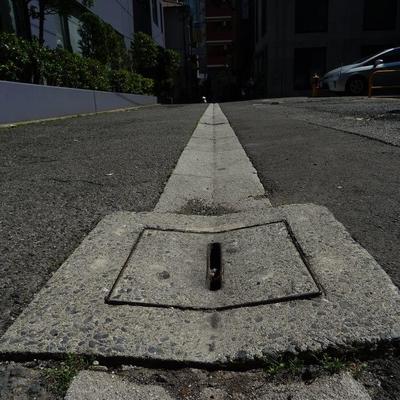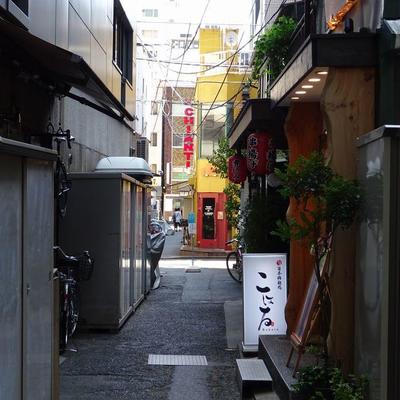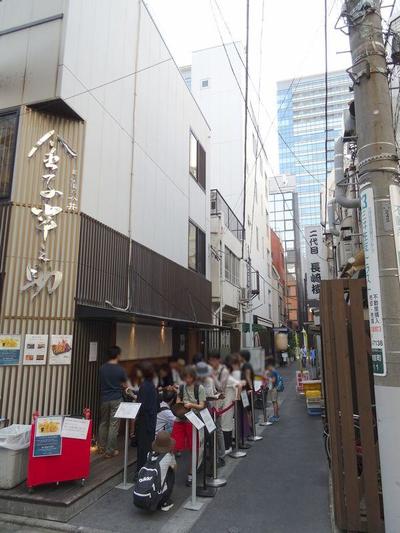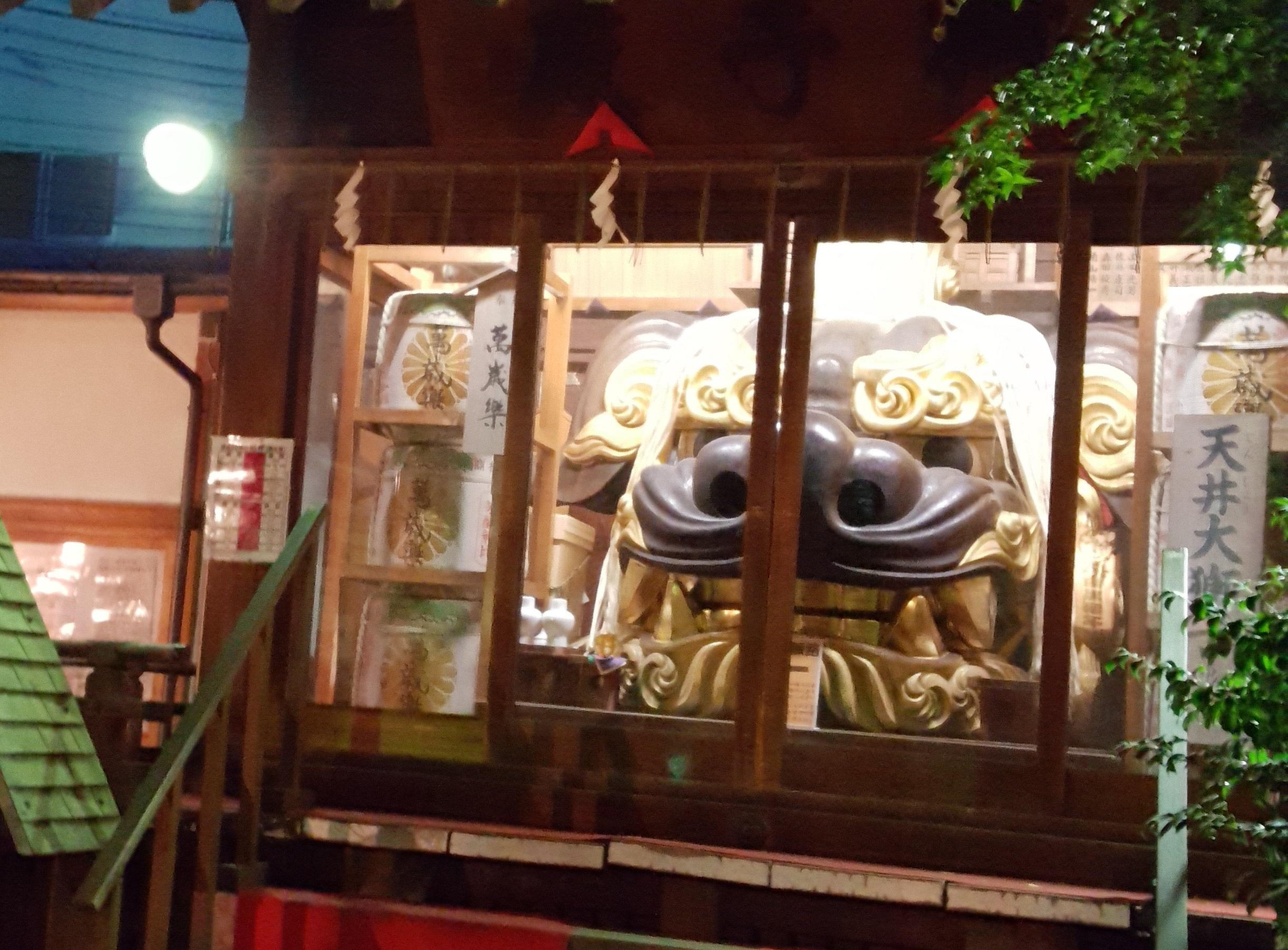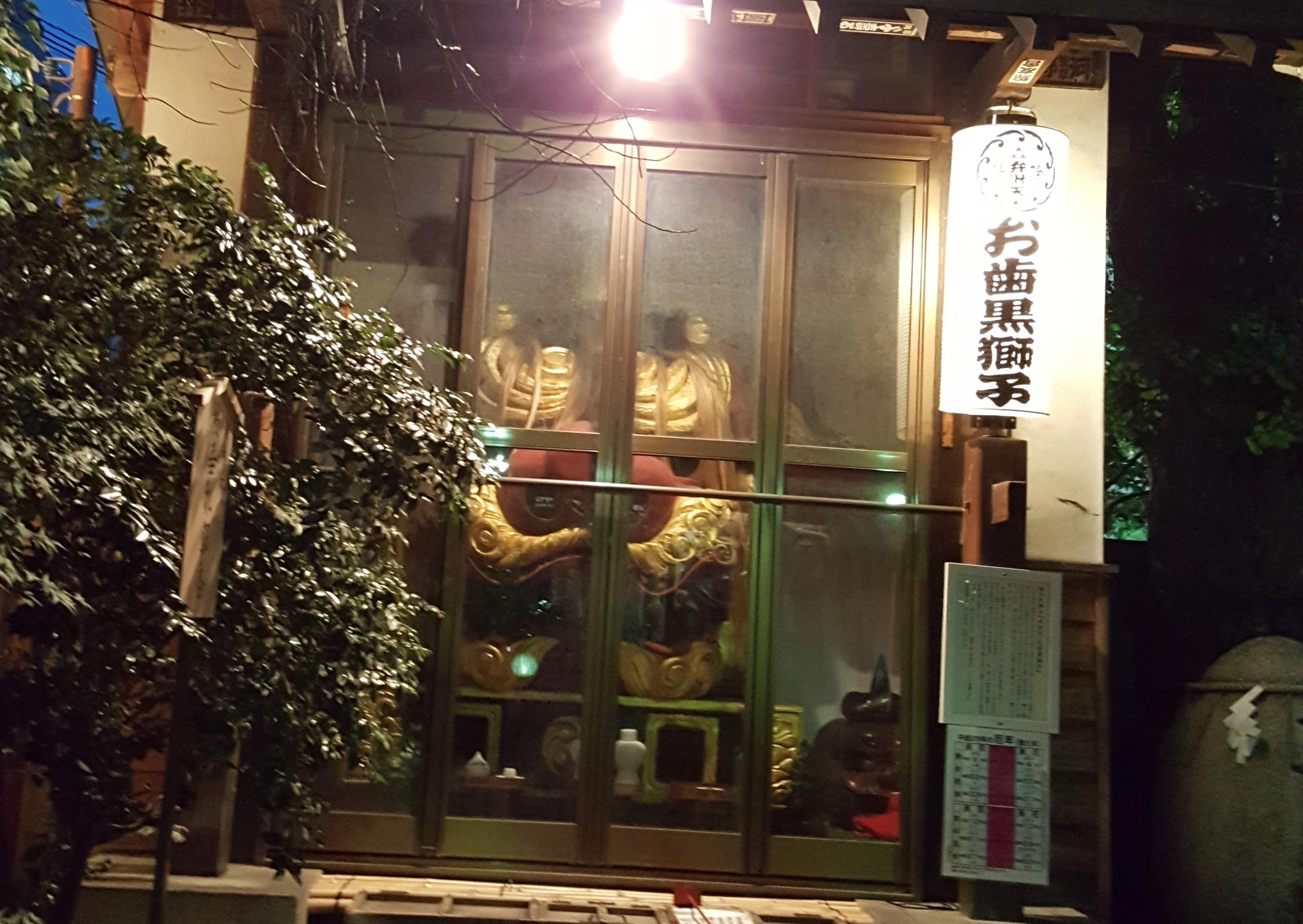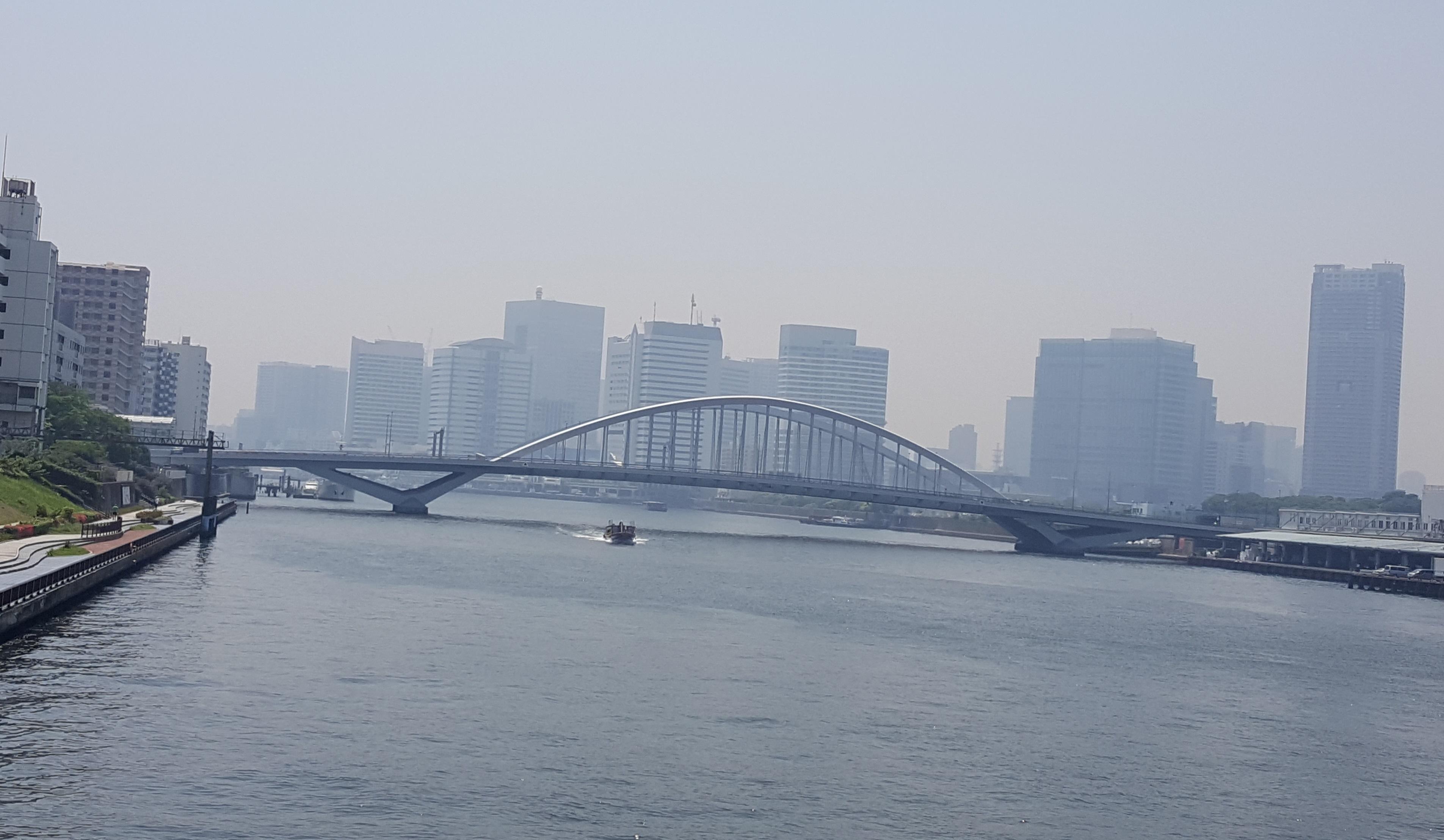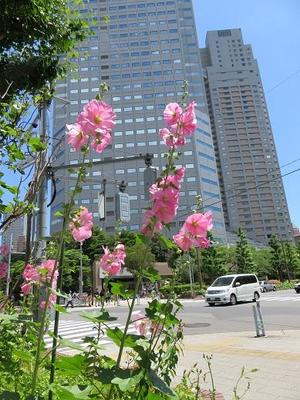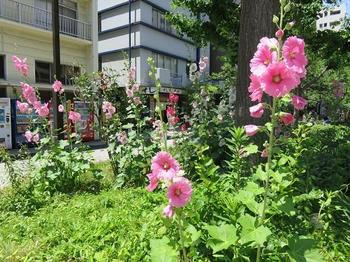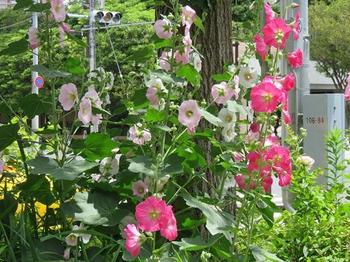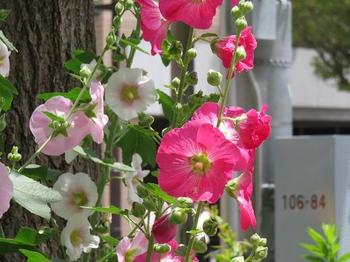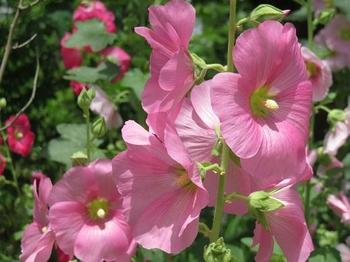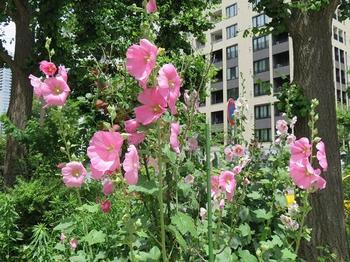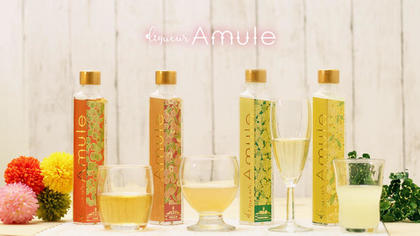This is a rosemary sea, which covers "gifts and I enjoy myself" as a text.
Shiseido Parlour Ginza Main Store Salon de Cafe, from June 1st (Friday), "Crown Melon" from Shizuoka Prefecture, and parfaits that use this luxuriously have appeared.
We are particular about cutting and combinations of ingredients so that you can enjoy the juicy and melting texture and rich aroma in various forms.
By cutting it round, it is tailored so that you can feel the mariage with traditional vanilla ice cream and matcha sauce as well as the original luxurious taste of Crown Melon.
The small melon made of thin baked cookies is also cute.
As expected, this is Shiseido Parlour Salon de Cafe.
This time, I would like to introduce 3 items.
This time, we also took care of Mr. Kotsugai, a public relations group of Shiseido Co., Ltd.
Then I would like to introduce some items.
※ The words in blue are explained at the bottom.
1,980 yen (tax included) of Crown Melon from the Fukuroi district of Shizuoka Prefecture
It is a gem parfait that luxuriously uses "crow melon", which is called the king of maskmelon, in styles such as fresh Sorbe Puree Jelly.
From the melting and fresh pulp, the rich aroma and rich sweetness spread abundantly, and the scent of melon spreads throughout the mouth.
In addition, if you apply a separate matcha sauce using Shizuoka Prefecture's "the sound of fog", it will give you a crisp astringency and become a parfait that you can enjoy twice with one.
The cute appearance also accentuates the sweetness.
Babaroa (with coffee or tea) of Yubari melon from Hokkaido 1,980 yen (tax included)
※ This item will be available from the beginning of June.
Yubari melon mousse is combined with refreshing yogurt palfe, and a cute melon is imagined.
It's a cute and cool dish.
The sweet and sour American cherry compote and sauce in the mousse accentuates the taste.
Please take this product with jelly of sauce made by boiling fruit and pleasant meringue with pleasant texture.
Ice cream soda of Crown Melon from the Fukuroi district of Shizuoka Prefecture 1,130 yen (tax included)
It is finished with the syrup of the crown melon in season.
The supreme cup with a rich sweetness is exquisite.
・・・ Please enjoy the refreshing and cute limited dessert unique to this season in Ginza.
The taste and aroma are wonderful, but every item is Instagrammable.
※ The image is an image. The items provided may differ from the image.
※ The menu contents and offer period may change depending on the availability of fruits.
※ In June, melons are also used for fruit sandwiches.
Shiseido Parlour Ginza Main Store Salon de Cafe
Ginza 8-8-3 3rd floor of Tokyo Ginza Shiseido Building
03-5537-6231 (reservation is not possible.)
Business hours from Tuesday to Saturday from 11:30 to 21:00 (last order 20:30)
Sunday and public holidays 11:30 to 20:00 (last order 19:30)
Regular holiday Monday (Open on holidays)
Click here for Shiseido Parlour's website.
⇒ http://parlour.shiseido.co.jp/
Rosemari's Sweets Glossary
※ It depends on the interpretation of Rosmali.
Sorbe
(sorbet) French.
An ice confection made by adding liquor such as juice, syrup, liqueur and champagne. It is made soft.
On the other hand, English sherbet is made using not only juice and syrup but also milk, egg white and gelatin.
Originally Italian gelato is made from flesh, milk, sugar, coffee, mint, lemon, and other flavorful ingredients. It looks colorful.
French flappees are made of finely crushed ice and sprinkled with Western sake or syrup.
The French Granite means "roughly" and is close to the flappe.
Western sake such as liqueur, fruits, vegetables, etc. are also used.
Puree
(purēe) French.
Smoothed by grinding and lining.
The paste was made by grinding.
In some cases, tomato paste is boiled down and concentrated.
Palfe
(parfait) French. In English, perfect.
It means a "complete" sweet made of fresh cream and ice cream together.
By the way, the parfait is Japanese-style.
Sundae is a sweets born in the United States that can be eaten on the Sabbath Day.
Comport
(compote) French.
Fruits are boiled in syrup.
Jam is made by adding sugar to fruit and boiled so as not to burn. Preserved food. English.
Confiture is made by boiling the fruit with syrup so that it is not scorched. Preserved food. French. It's very close to jam.
Don't boil down the compote. It doesn't contain much sugar as jam or confiture, so it doesn't become a preserved food.
Meringue
(meringue) English. It's the same spelling in French, but reading is uneven.
It is made by adding sugar in the egg white.
It is also called meringue, which is dried and baked.
Syrup
(sirop) French. The reading is "Shiro." By the way, siroop in Dutch and syrup in English.
The sugar is dissolved in water and boiled down.
Or, it is added with flavor.
